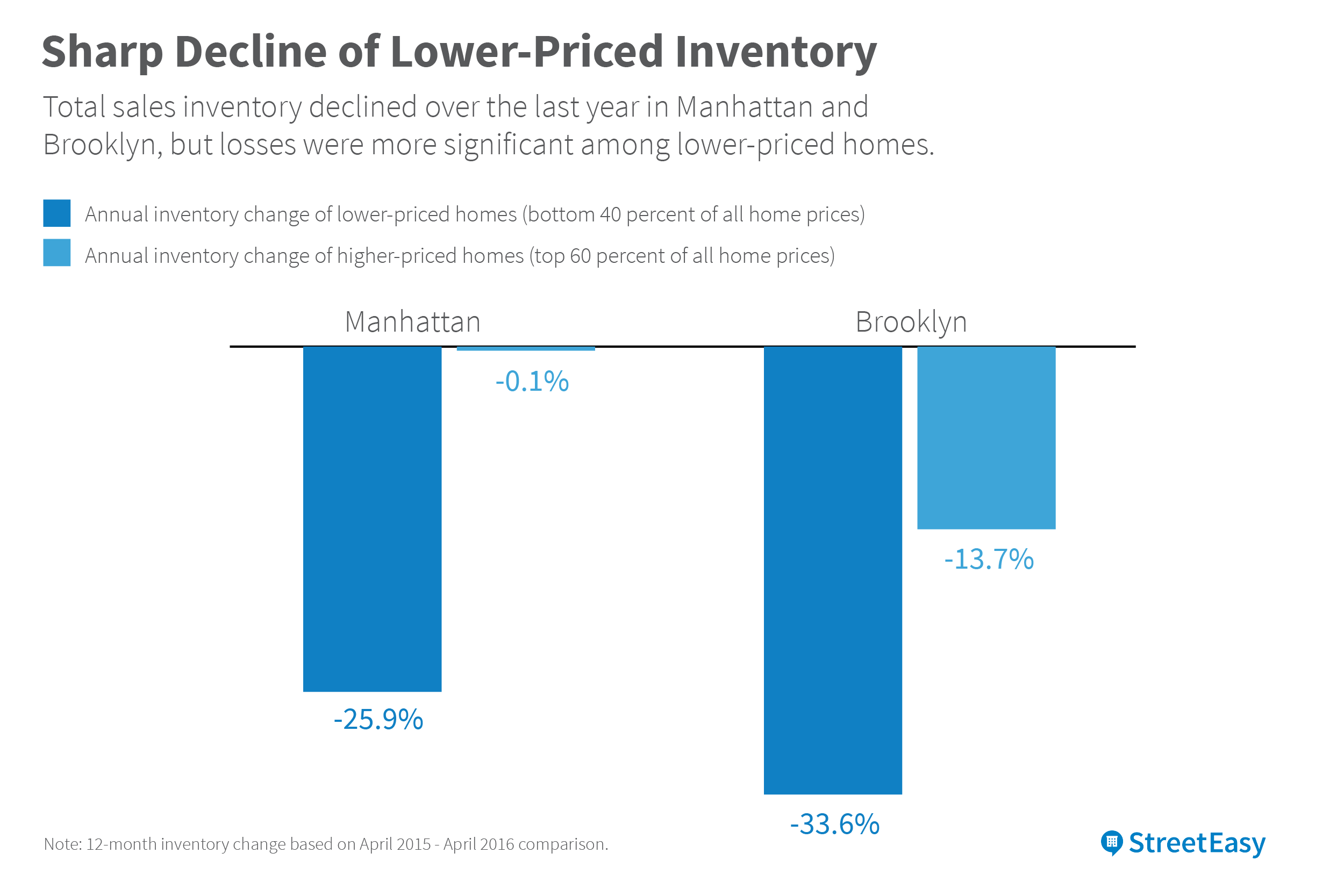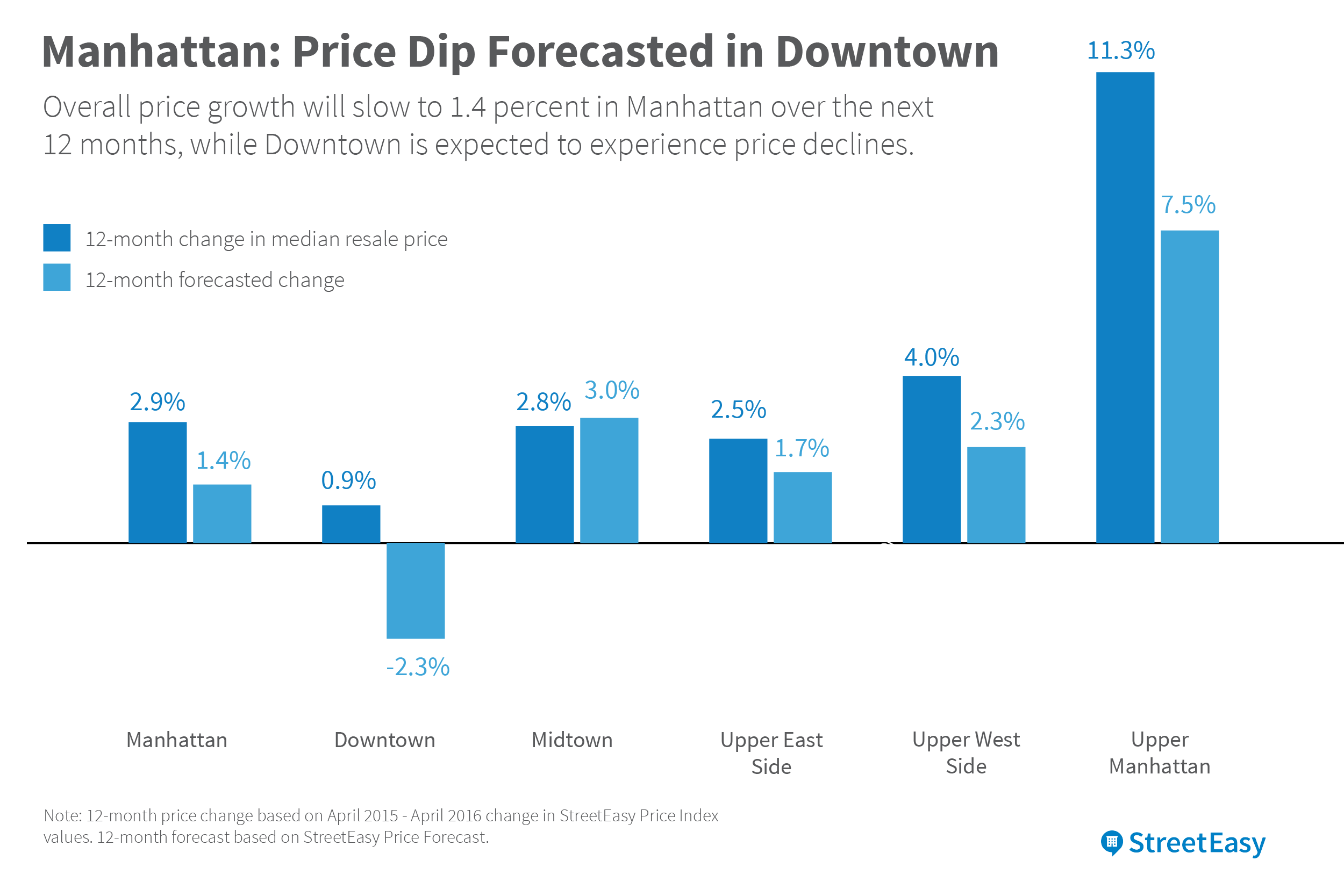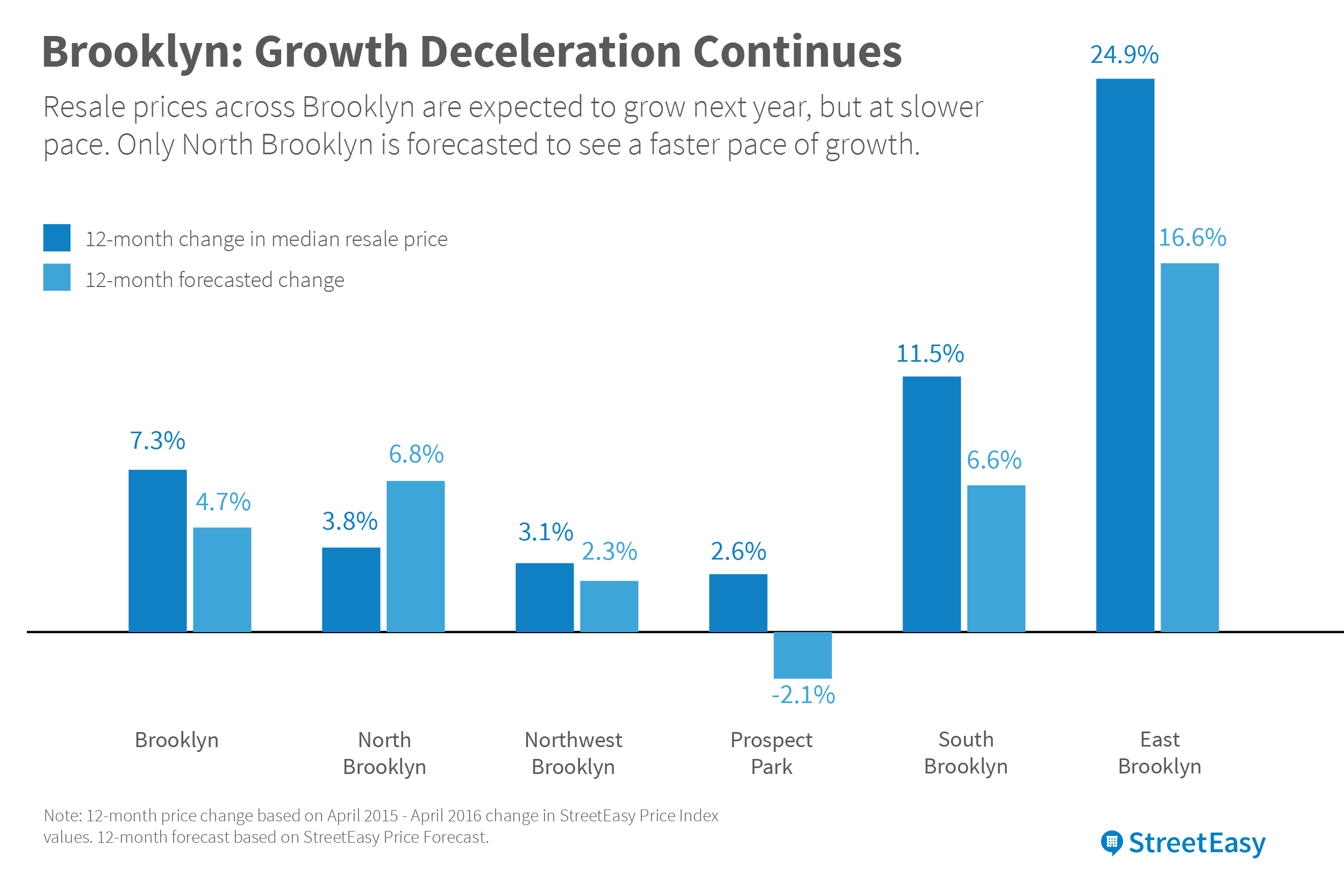Manhattan and Brooklyn home prices continued to rise in April, even as growth was slower than last year amid record-high prices in both boroughs. The median resale price in Manhattan grew by 2.9 percent from last year to $975,017, according to the StreetEasy Price Indices, continuing a long trend of decelerating annual growth in the borough. Price growth was the highest in the Upper Manhattan submarket, where the median resale price grew by 11.3 percent. All other submarkets grew at a rate of less than five percent. In Brooklyn, the median resale price grew by 7.3 percent to $549,995. The borough was led by remarkable growth in the East Brooklyn submarket, where the median resale price grew by 24.9 percent. South Brooklyn also saw double-digit annual growth in April (11.5 percent) while growth in all other submarkets was below 10 percent.
[tableau server=”public.tableau.com” workbook=”priceIndices” view=”StreetEasyPriceIndex” tabs=”no” toolbar=”no” revert=”” refresh=”yes” linktarget=”” width=”600px” height=”760px”][/tableau]
While the luxury segment in Manhattan has experienced many months of price decline, other segments of the real estate market have also begun to experience decline. The median resale price among homes at top end of the market, or priced above $3.31 million, peaked in October 2015 and has declined every month since. Similarly, the median resale price of all homes priced between $1.76 million and $3.31 million peaked in August 2015 and has fallen every month since. This trend also holds for homes priced between $1.05 million and $1.76 million, for which the median resale price peaked in October 2015 and has fallen since.
The slowdown across the majority of price tiers is a possible indicator of a much larger slowdown across the full market. It also indicates that Manhattan prices overall continue to rise due to strong appreciation in the least expensive price tiers (below $1.05 million). This is due in large part to significant declines in inventory of lower-priced homes in Manhattan. The number of homes priced below $1.05 million fell 25.9 percent from last April, while the number of homes priced above that remained the same from last April.

Sales Market Slightly More Competitive in Brooklyn
In Manhattan, home sellers typically received 98.1 percent of their initial asking price in April, down slightly from 98.2 percent last year. In Brooklyn, home sellers typically received 97.1 percent of their initial asking price, down from 99.5 percent last year. The market appeared to be the most competitive in the Prospect Park submarket of Brooklyn, where the median sale-to-list price ratio was 100 percent, meaning a seller in that area typically received what they asked for in April. By the same measure, the market was the least competitive in South Brooklyn where the median sale-to-list price ratio was 94.7 percent, meaning a seller in that area typically needed to provide a 5.3 percent discount off the initial asking price.
Two other market indicators point to a slightly less competitive sales market in Manhattan compared to last year, while Brooklyn was slightly more competitive. Sellers provided more discounts in April than they did last year in Manhattan. The number of listings that were discounted as a share of all available listings rose slightly to 33.2 percent in April. In Brooklyn, the share fell to 23.9 percent. Homes also lingered on the market for a slightly longer period of time compared to last year in Manhattan. Homes that went into contract in April typically spent 44 days on the market, one day longer than last year. In Brooklyn, homes that went into contract typically spent 36 days on the market, two days less than last year.
Rent Price Growth Slows Across Both Boroughs
A sharp decline in rental inventory in the Upper Manhattan submarket helped to push up overall rent prices in the area. The median rent in Upper Manhattan grew 3.8 percent from last year, according to the StreetEasy Rent Indices, the highest annual growth among the five submarkets in Manhattan and fueled by a 16.1 percent decline from last year of total number of rental units available. A similar trend was seen in the Prospect Park submarket in Brooklyn, where median rent grew by 1.7 percent from last year amid a 17.2 percent annual decline in total rental inventory.
In both boroughs, annual rent growth cooled considerably from last year. The median rent in Manhattan grew 2.2 percent from last year to $3,240, according to the StreetEasy Rent Indices. Last April, the annual growth rate was 5.1 percent. In Brooklyn, the median rent grew 0.6 percent from last year to $2,843. Last April, the annual growth rate was 4.2 percent.
According to two key market indicators, the rental market overall was roughly as competitive as last year in Brooklyn and slightly less competitive than last year in Manhattan. Rental units in Manhattan typically spent six days longer on the market in April compared to last year, while in Brooklyn they typically spent the same amount of time on the market as last year. In the biggest sign of a softening in the rental market, discounts were more prevalent in both boroughs. Nearly one in three of all units available for rent in Manhattan in April (32.0 percent) were discounted, a higher share than last year by 3.6 points. In Brooklyn, 33.7 percent of all units available for rent in April were discounted, a higher share than last year by 6.6 points.
12-Month Outlook: Price Declines in Downtown Manhattan and Prospect Park
The steady deceleration of price growth will continue through the next year. The median resale price is expected to rise 1.4 percent in Manhattan over the next 12 months (down from 2.9 percent growth over the last 12 months), and rise 4.7 percent in Brooklyn (down from 7.3 percent over the last 12 months), according to the StreetEasy Price Forecast. Price growth in East Brooklyn will continue to eclipse all other submarkets: the 12-month growth forecast is 16.6 percent in East Brooklyn, followed by Upper Manhattan (7.5 percent) and North Brooklyn (6.8 percent). Prices are expected to decline in Downtown Manhattan and Prospect Park over the next year.










